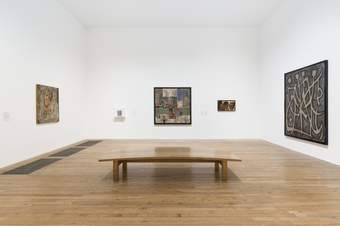
The Shape of Words
9 rooms in In the Studio
See how artists explored the abstract and expressive potential of words, letters, signs and calligraphy
This display offers an account of artistic experiments involving text and abstraction, shared by artists whose paths intersected across North Africa, Asia, Europe and Latin America. Their explorations occurred at critical political, social and art historical moments of transformation during the mid-twentieth century. The processes set in motion globally during this period, such as decolonisation, led to a rise in transnational political alliances and cultural solidarities. This era was filled with a sense of rebellion and innovation in the arts.
The connections and exchanges formed by artists as they moved across the globe resulted in a variety of visual expressions, often shaped by their unique trajectories or memories of their distant homes. While some artists pursued these approaches independently, others were part of schools and groups. These included: the Casablanca Art School, CoBrA (acronym for Copenhagen, Brussels, and Amsterdam), the Khartoum School, Bauhaus, as well as artistic currents such as Lettrism, Surrealism and Saqqakhana.
Following the devastation of the two world wars, artists across different cities were already experimenting with modes of abstraction, and the figure had all but disappeared from painting. Artists from newly independent countries sought new artistic vocabularies rooted in their local visual heritages. Working within a continuum of forms across history, many experimented with letters and script as the basis for new, anticolonial, abstract languages. These forms often converged to suggest figures, landscapes and cityscapes at the intersection of abstraction and representation.
At the same time, European artists turned to Asia and North Africa for new artistic ideas. These ranged from the interlocking geometric shapes in Kufic script to the fluid brush marks in Japanese and Chinese calligraphy. This display demonstrates some of these transformative encounters, that pushed artists to reconceive ideas of depth, surface and materiality.
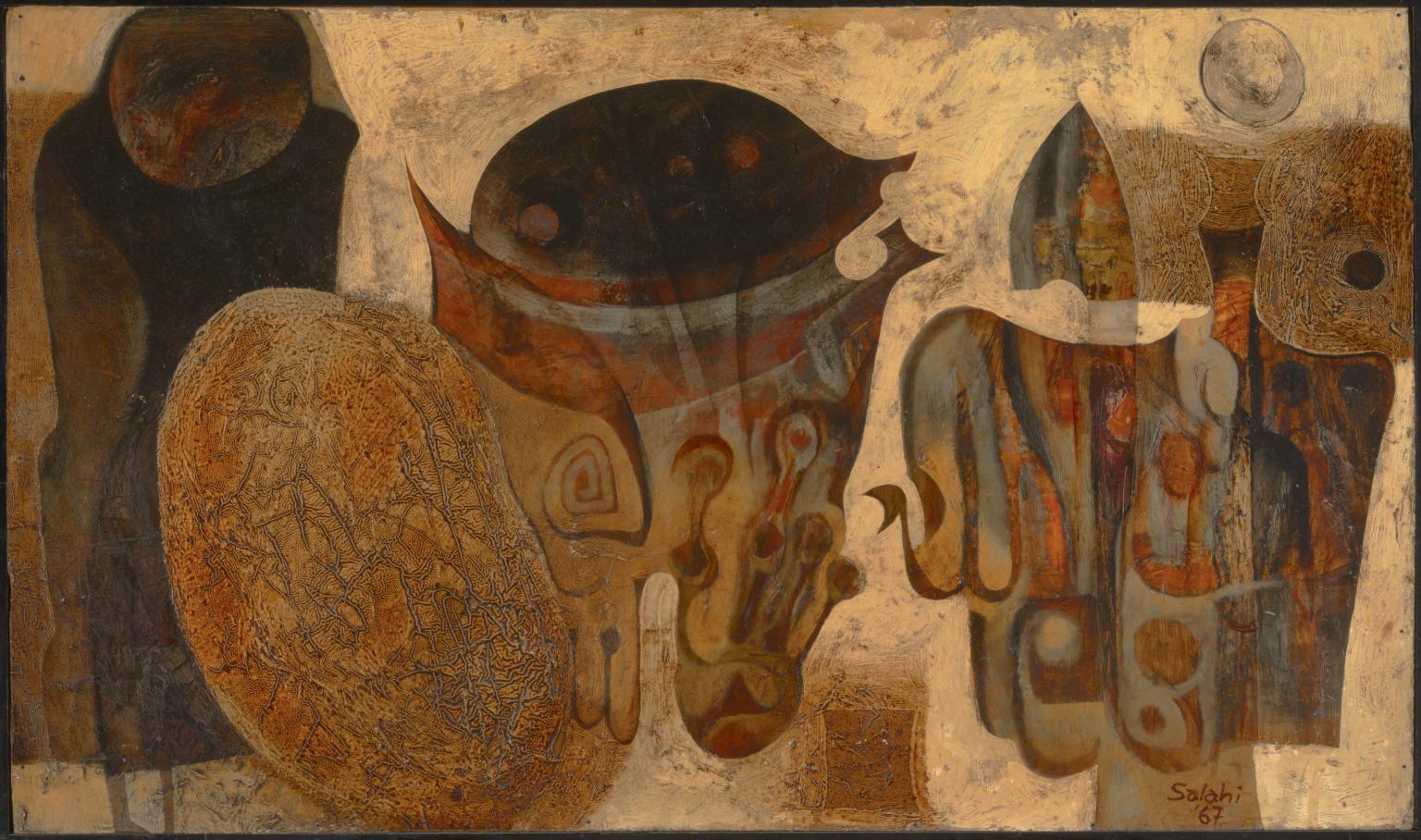
Ibrahim El-Salahi, Untitled 1967
1/28
artworks in The Shape of Words
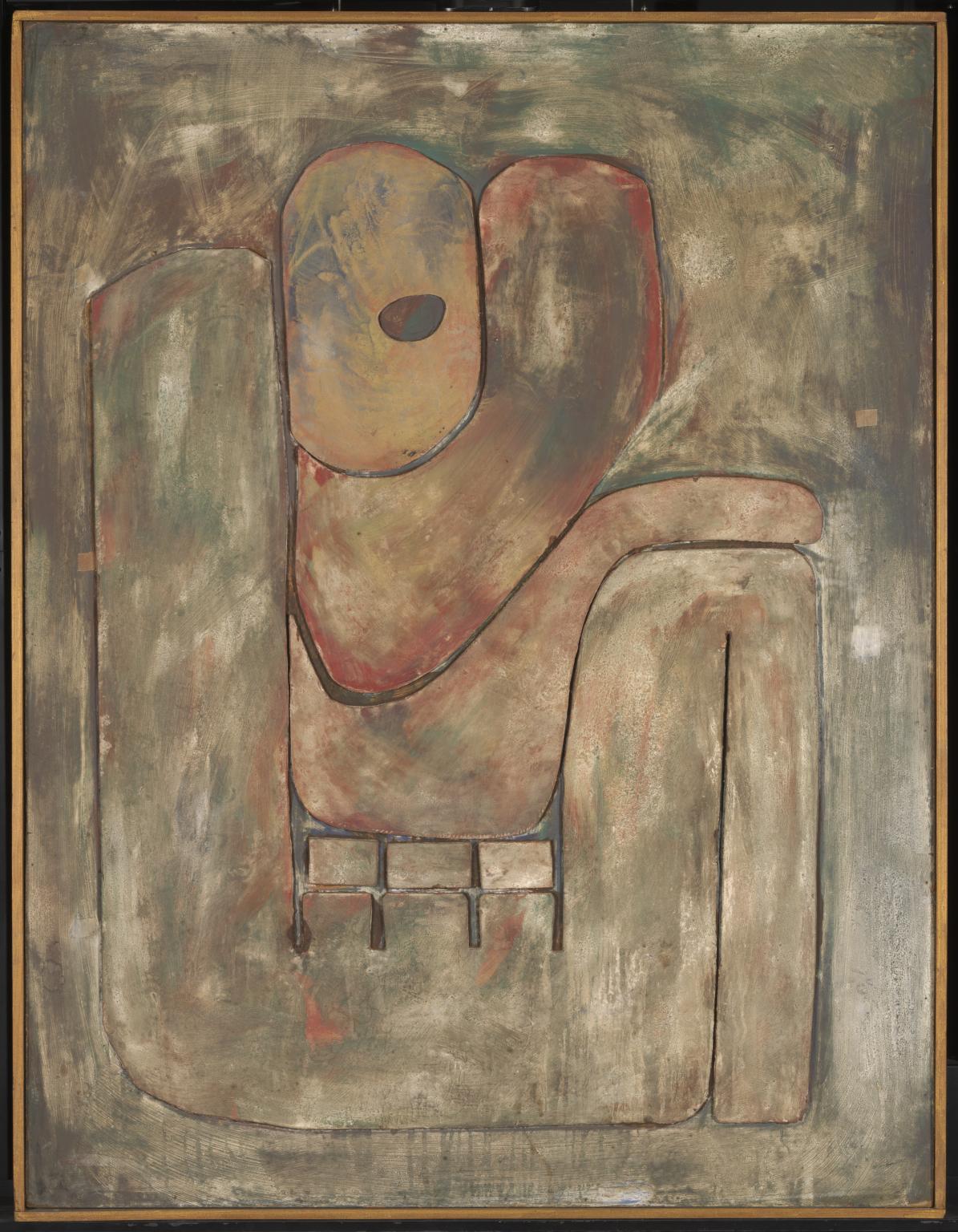
Hamed Abdalla, Lost or Escaped 1966
2/28
artworks in The Shape of Words
Mirtha Dermisache, Untitled c.1970
This is one of several ink drawings by Dermisache that look like hand-written letters but are unreadable characters invented by the artist. They make strange the everyday process of reading and writing. Dermisache invites us to reflect on our ability to share complex ideas and experiences through marks on a page. As Argentina moved towards dictatorship, her unreadable writing came to be seen as a way of resisting state censorship through illegibility.
Gallery label, January 2019
3/28
artworks in The Shape of Words
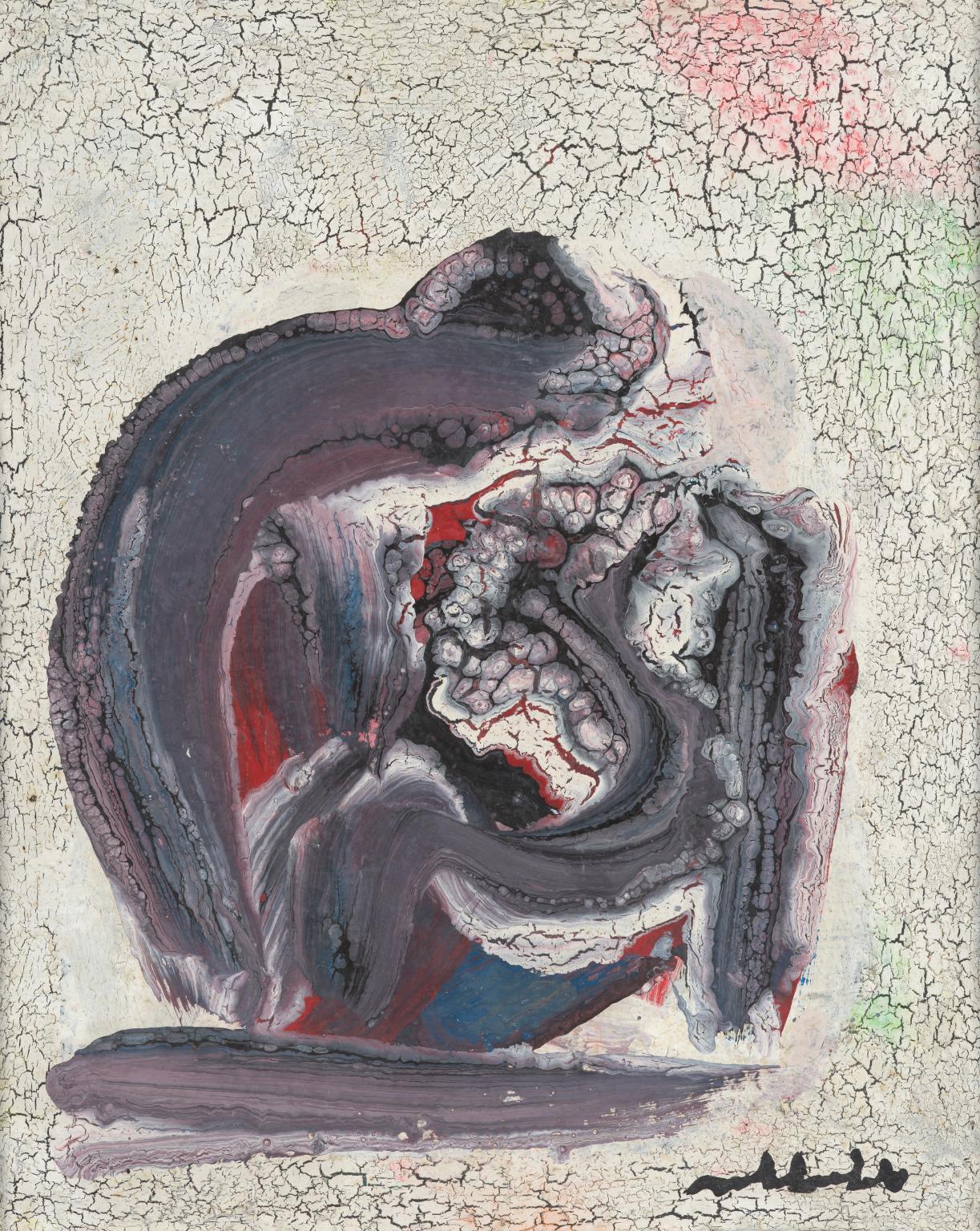
Hamed Abdalla, Meditation 1969
4/28
artworks in The Shape of Words
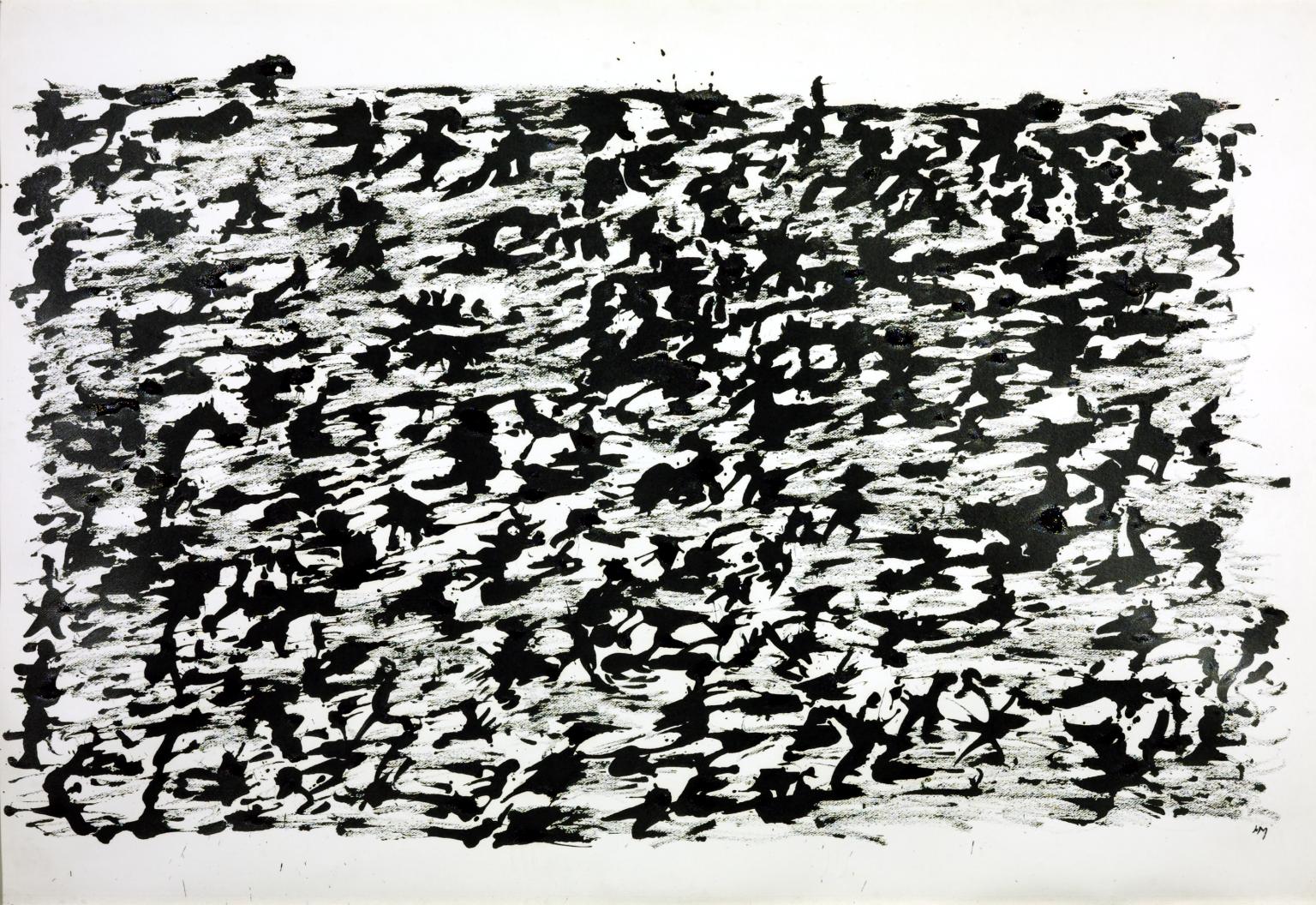
Henri Michaux, Untitled Chinese Ink Drawing 1961
Michaux was both a poet and a painter, but he spoke of drawing as a release from words: 'a new language, spurning the verbal'. His drawings are, nevertheless, calligraphic in character, often suggesting indecipherable writing. Between 1954 and 1962 he experimented with working under the influence of the drug mescaline. The early results were obsessively detailed, while the ink drawings show an intense repetition of slashing marks. Michaux described fighting with these blots, likening them to 'insatiable desires or knots of force, which are destined never to take form'.
Gallery label, August 2004
5/28
artworks in The Shape of Words
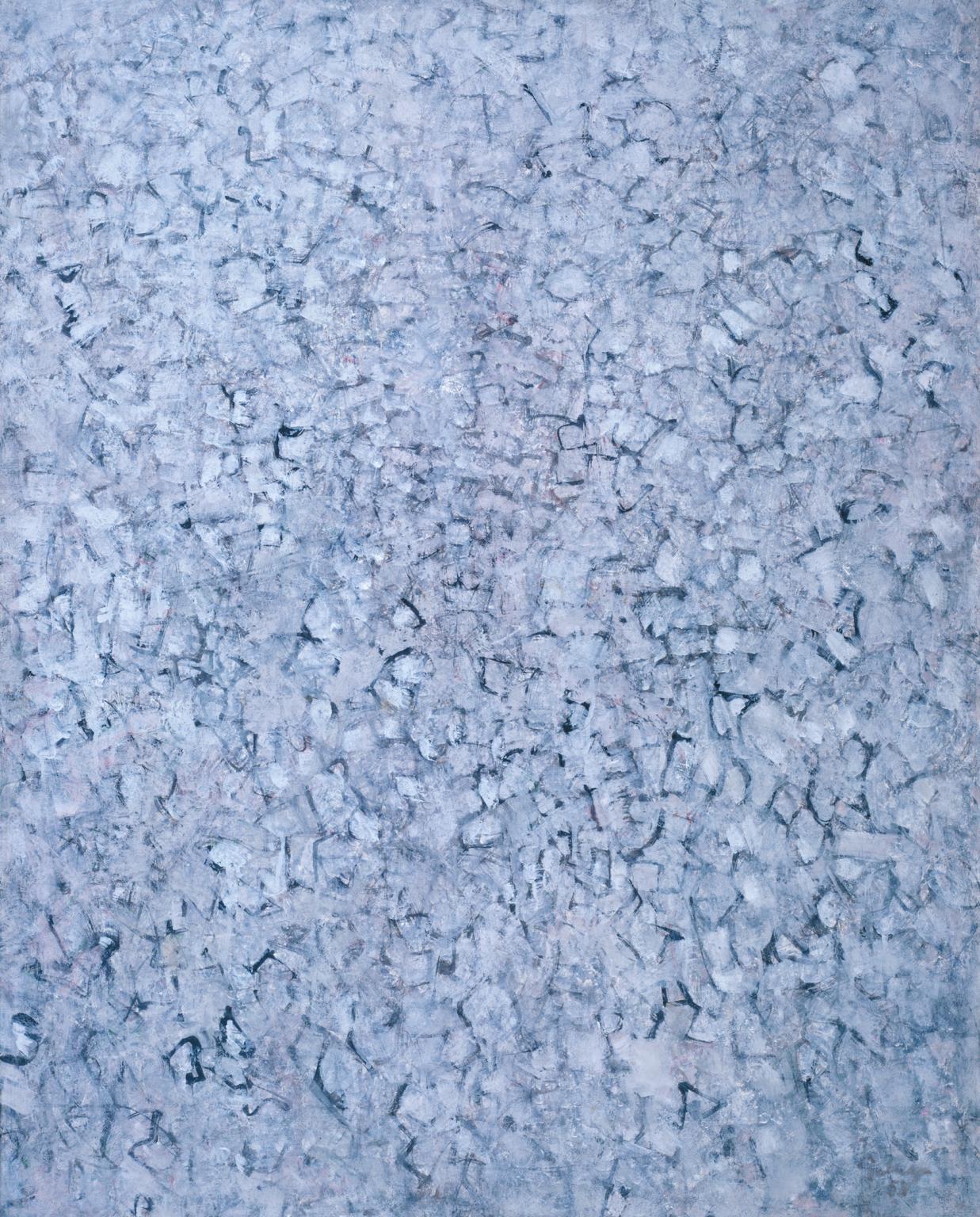
Mark Tobey, Northwest Drift 1958
After studying calligraphy in China and Japan, Tobey developed a technique of painting with rapid brushstokes, which he called ‘white writing’. Northwest Drift is one of several works that reflect his meditative response to landscape. He wrote: ‘Seattle where I painted this picture is a place of virginal winds, air currents and intermingled seasons... Gray skies, gray water make one conscious of this color and I have used a series of gray tones which seem so indigenous to the locale.’
Gallery label, November 2005
6/28
artworks in The Shape of Words
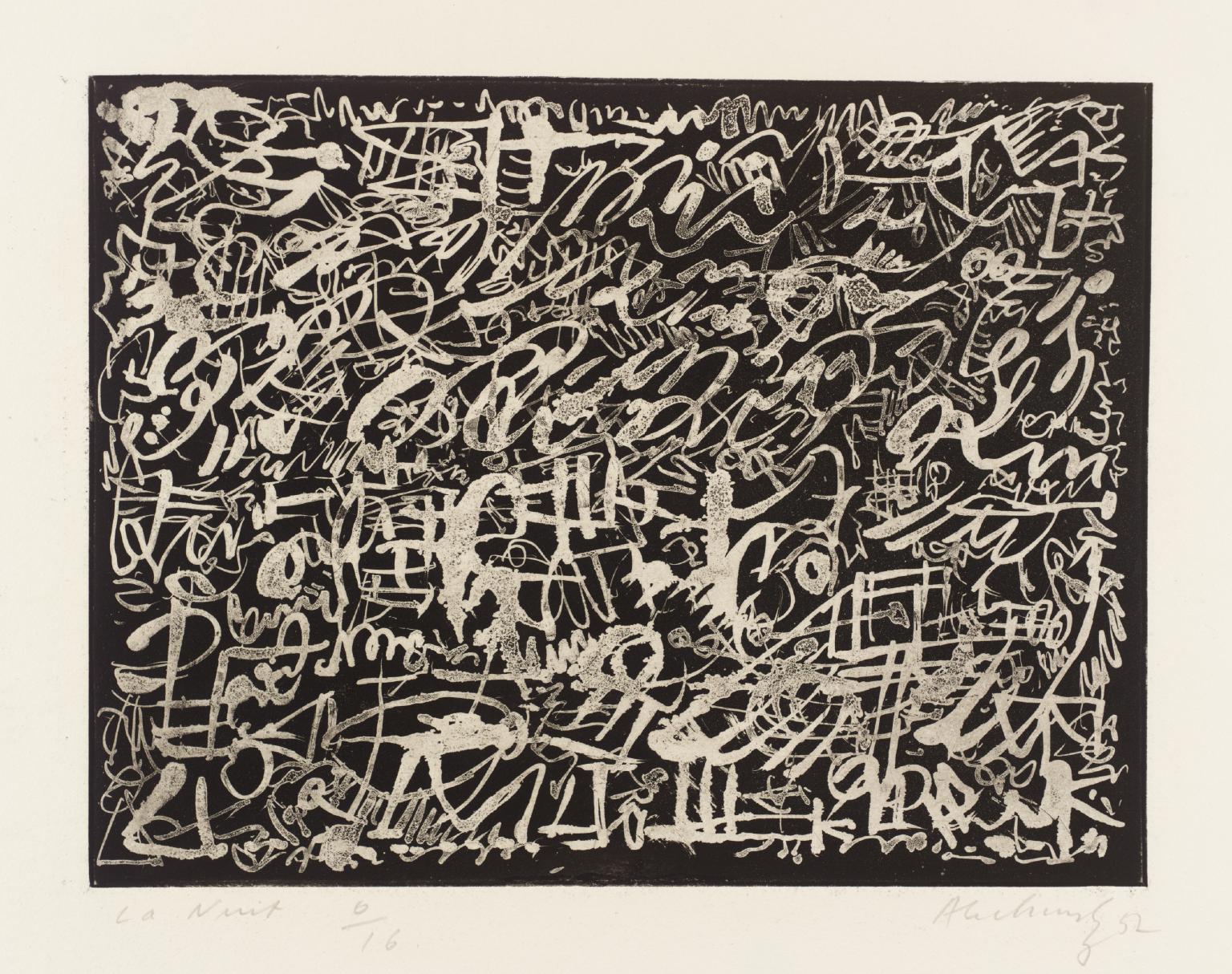
Pierre Alechinsky, The Night 1952
In the upper part of Something of a World the artist transcribed his own poem in mirror-image with both hands simultaneously. The personal quality of hand-writing greatly appealed to CoBrA artists. ‘The important thing,’ Alechinsky wrote, ‘is to discover an inner script ... with which we can explore ourselves organically.’ Alechinsky said that he painted as if he was a spinning-top, unable to control his own movements. This is evident in The Night in which twists and twirls of white on a black ground evoke luminous night forms.
Gallery label, July 2008
7/28
artworks in The Shape of Words
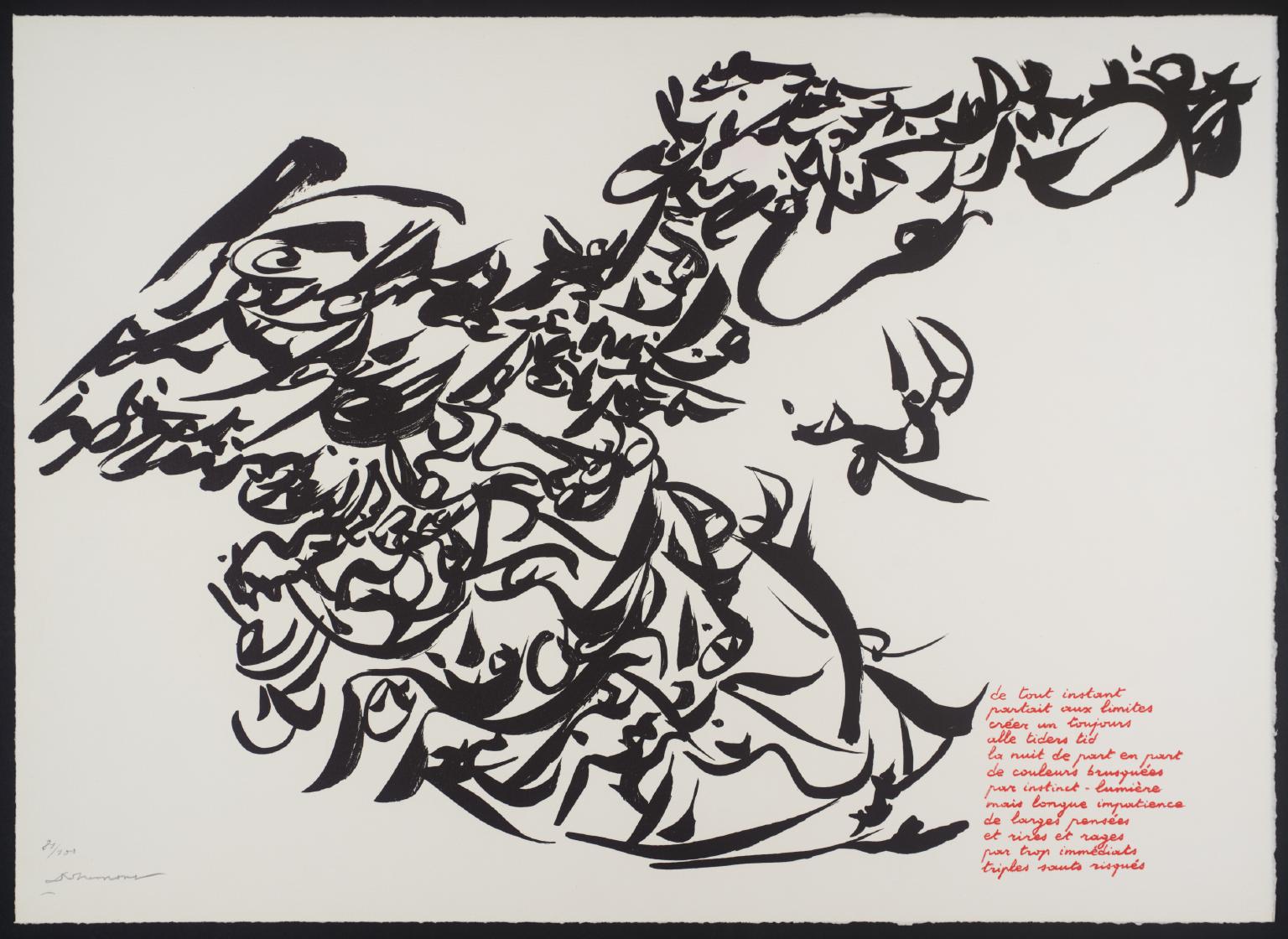
Christian Dotremont, [no title] 1975–6
8/28
artworks in The Shape of Words
Li Yuan-chia, Untitled c.1954–61
9/28
artworks in The Shape of Words
Li Yuan-chia, Untitled c.1954–61
10/28
artworks in The Shape of Words
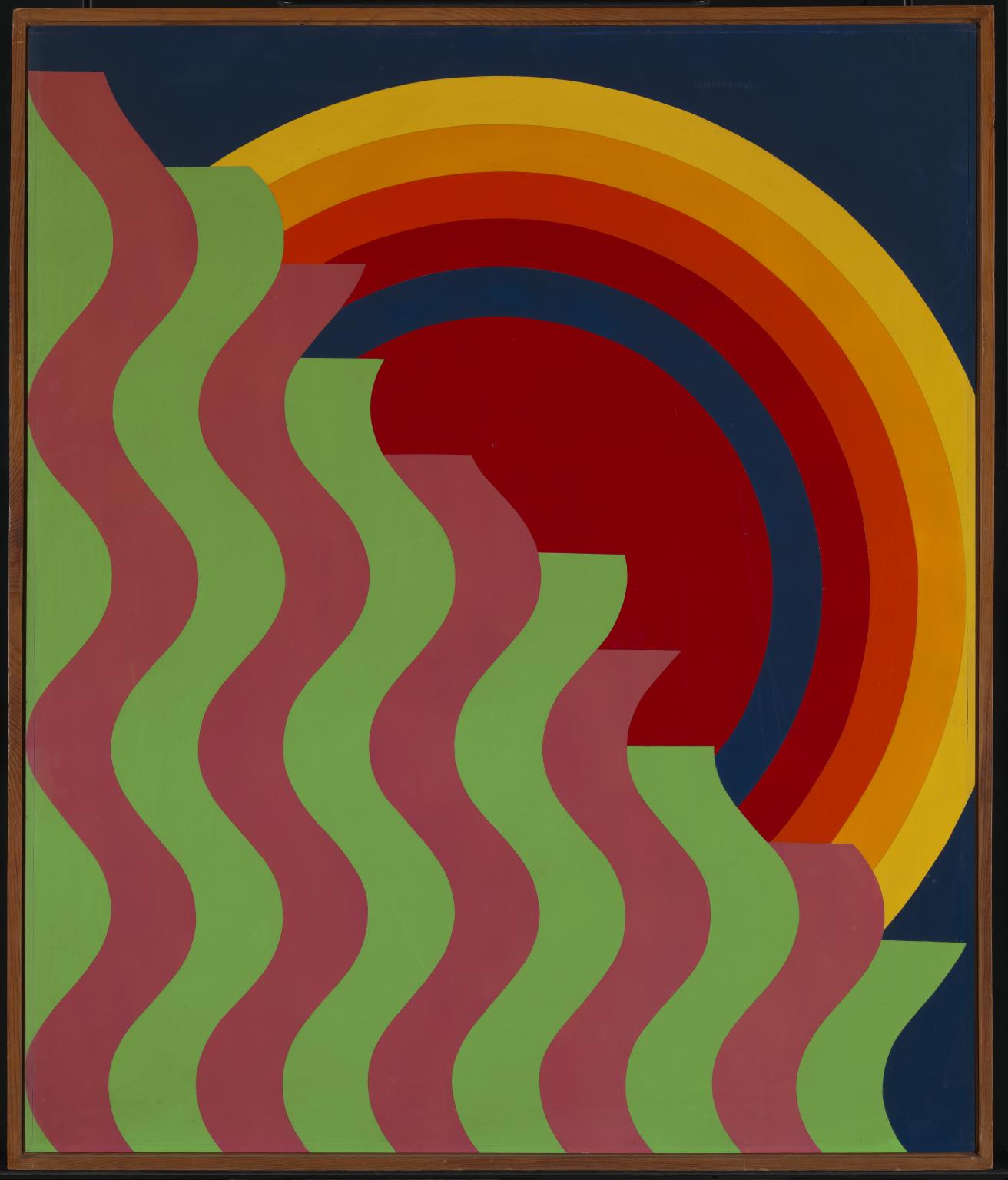
Mohammed Melehi, Casa 1970
The title of the painting Casa is a common shortening for the city of Casablanca in the artist’s native Morocco. It can be read as an abstracted cityscape, informed by Melehi’s nomadic lifestyle which saw him travelling from Marrakech to Rome, Paris and New York. In the 1960s, during his stay in New York, he had already worked on a series of paintings with titles like New York, Above Manhattan and Sleeping Manhattan that set up a dialogue with the work of American painters such as Frank Stella, Ellsworth Kelly, Kenneth Nolan and Jules Olitski (whom Melehi met in the early 1960s when the American artist exhibited in Rome at Topazia Alliata Gallery, run by the mother of Melehi’s then wife, Toni Maraini).
11/28
artworks in The Shape of Words
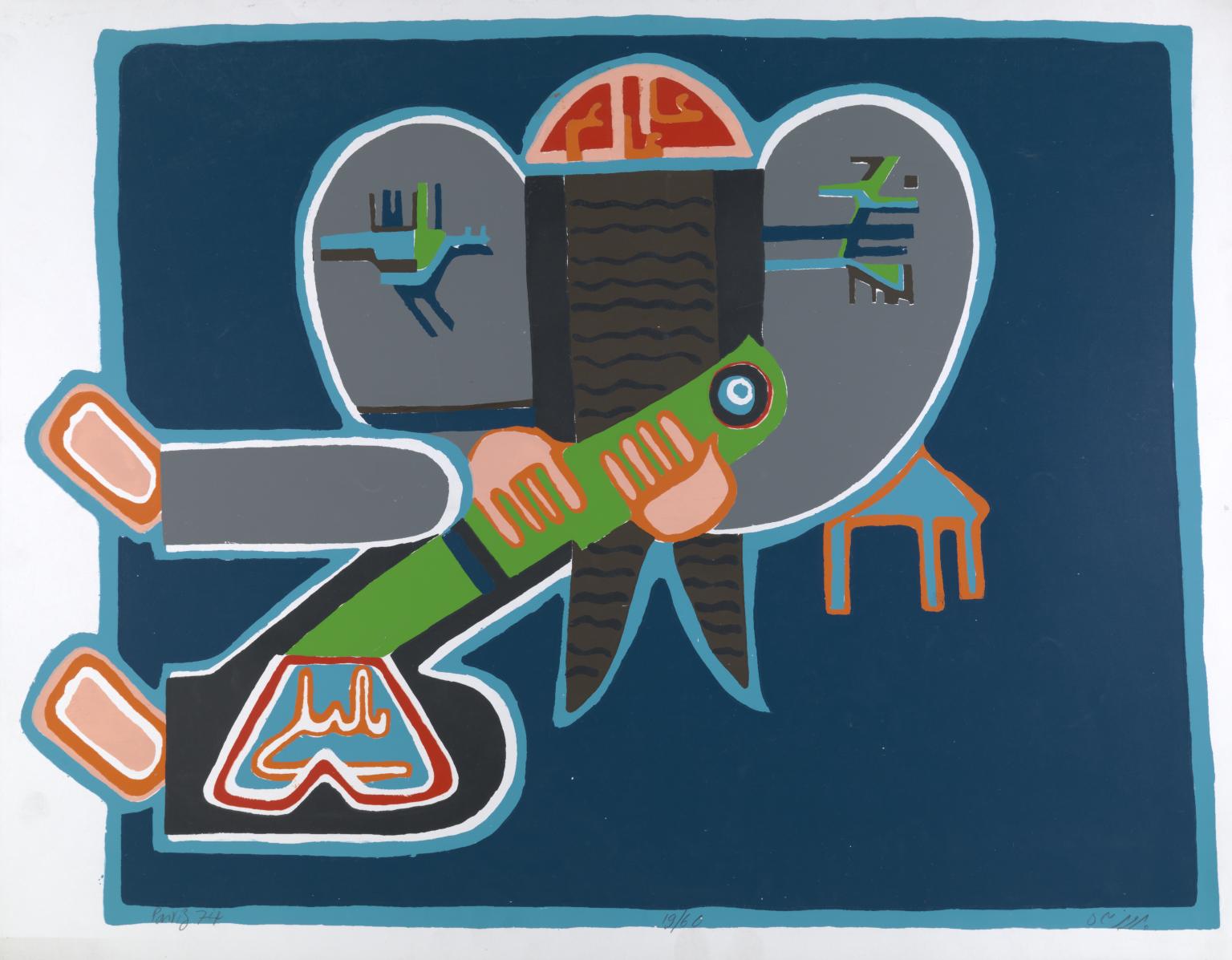
Parviz Tanavoli, Poet and Bird 1974
12/28
artworks in The Shape of Words
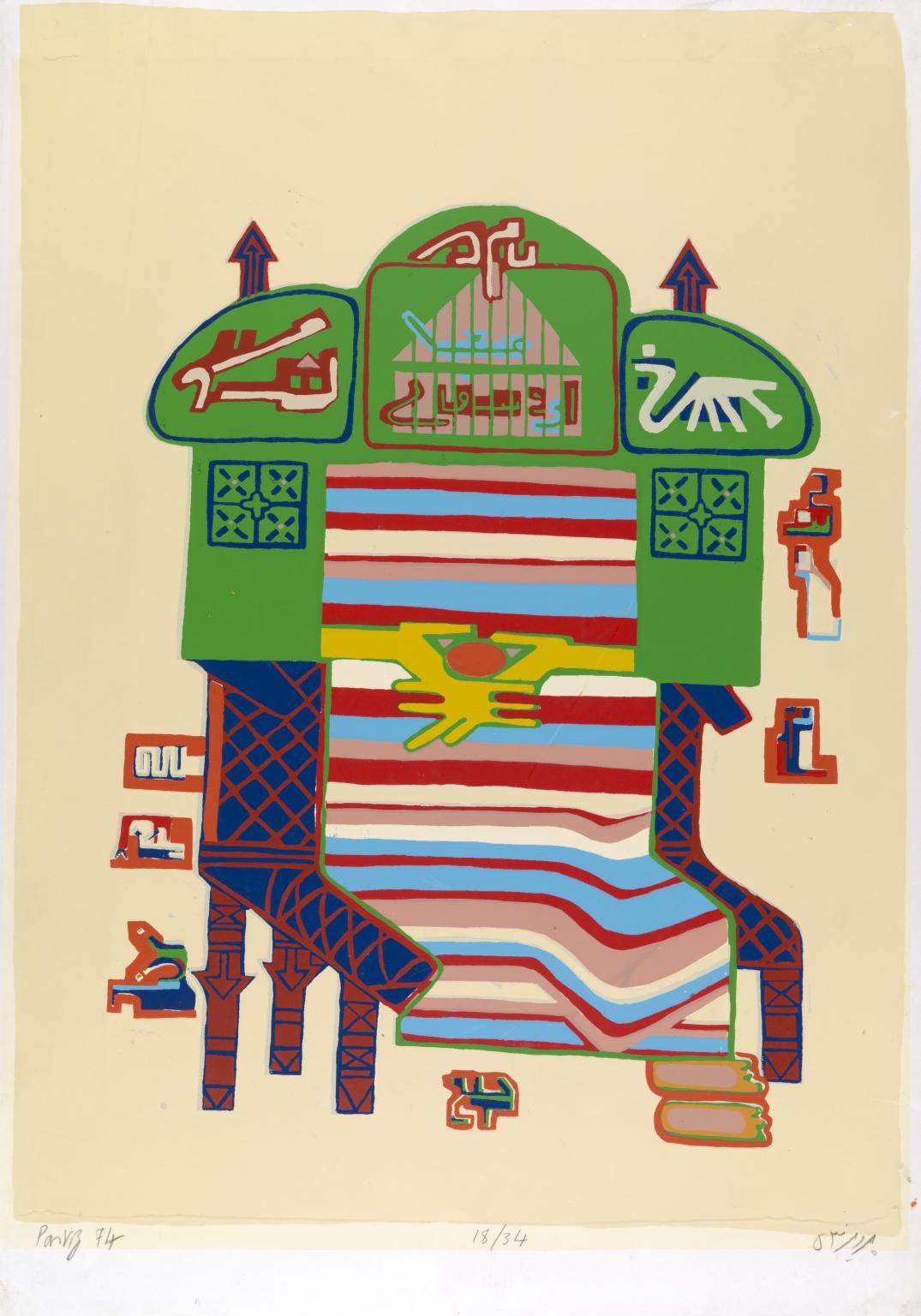
Parviz Tanavoli, Poet Squeezing Lemon 1974
13/28
artworks in The Shape of Words
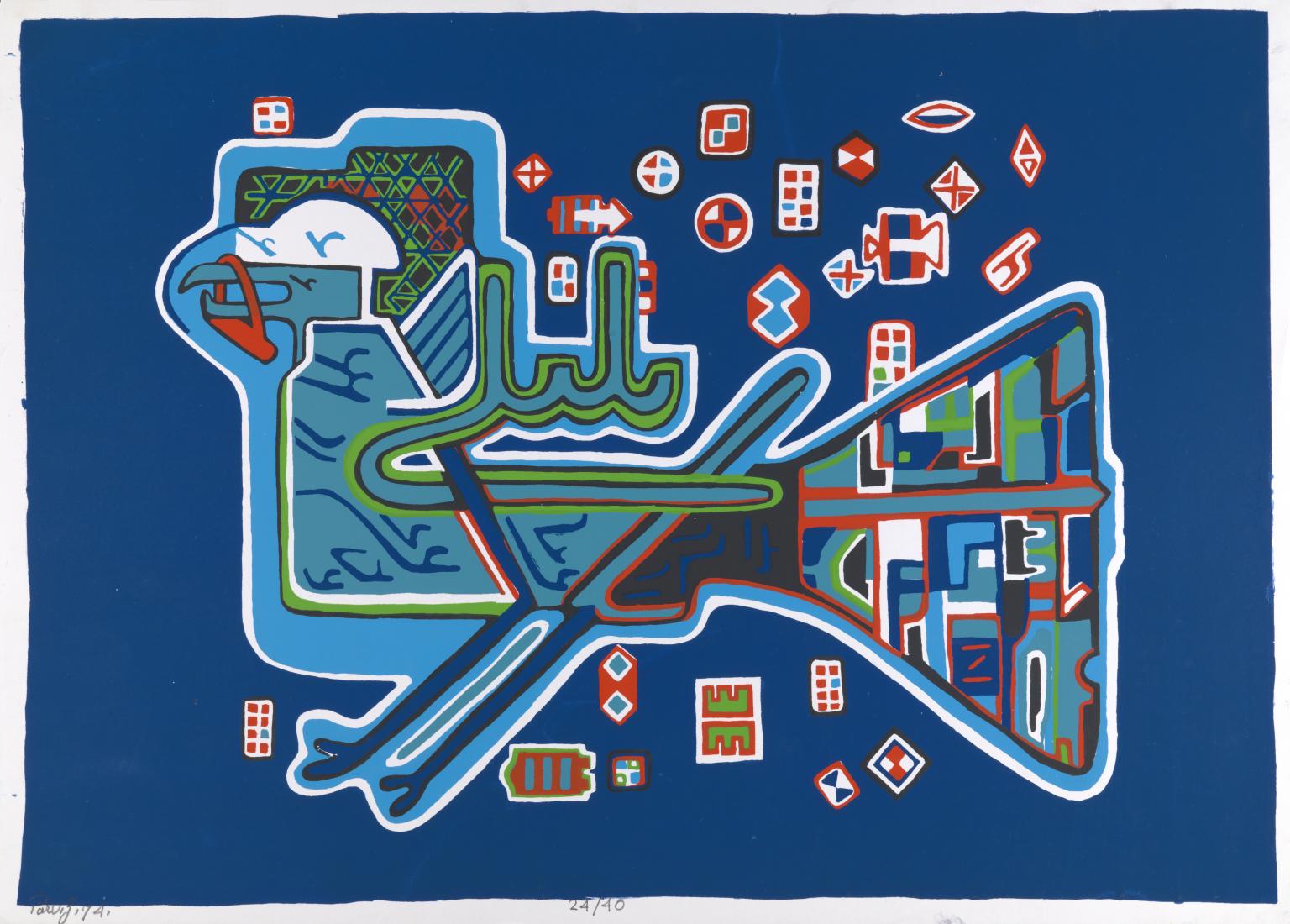
Parviz Tanavoli, Nightingale 1974
14/28
artworks in The Shape of Words
Dia al-Azzawi, The Arab League Hotel 1971
15/28
artworks in The Shape of Words
Li Yuan-chia, Untitled c.1954–61
16/28
artworks in The Shape of Words
Syed Sadequain Ahmed Naqvi, Four Figures Sitting in Paris 1967
Four Figures Sitting in Paris 1967 is an oil painting on canvas that depicts four abstracted, interconnected shapes. Made of broad white elongated lines, delineated by black contours, the figures stand out against a grey and purple background. Their diamond-shaped heads and the multiple lines that make up their slender limbs recall letters of the Urdu alphabet.
17/28
artworks in The Shape of Words
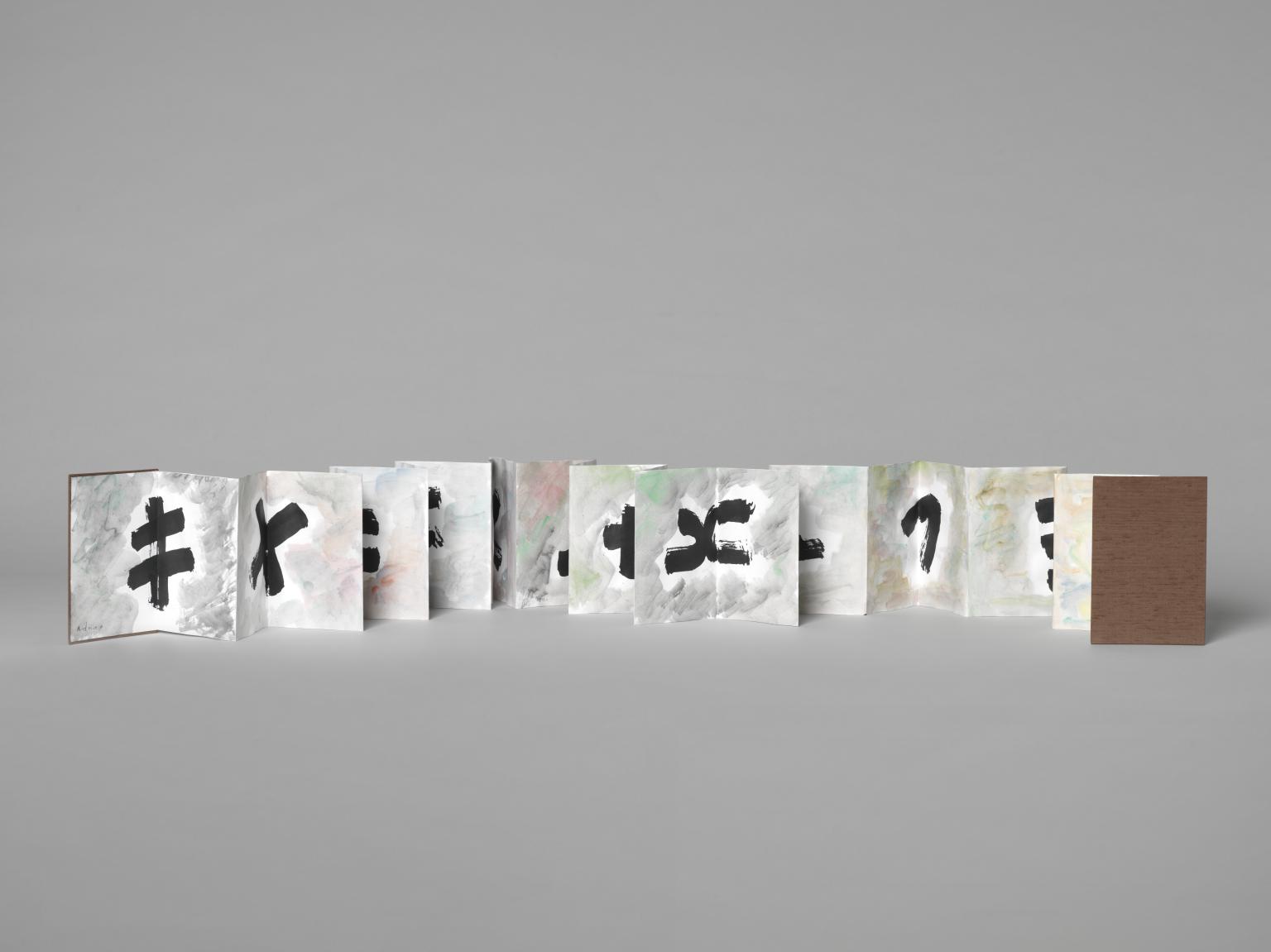
Etel Adnan, Key Signs 2017
Key Signs 2017 is an example of Etel Adnan’s ‘leporello’ works, leporello being a book format with folded concertina-style pages. The work combines washes of watercolour with black ink hieroglyph-like forms. While in her other leporello works, Adnan at times has referred to specific texts, such as the poem Assassination Raga (1968), an ecstatic funeral oration for Senator Robert Kennedy written by the American beat poet Lawrence Ferlinghetti in the earlier Untitled 1970 (Tate T15063), in Key Signs Adnan has developed a visual vocabulary of glyphs that is more explicitly abstract, as the title suggests. She has explained that, for her, ‘Abstract art was the equivalent of poetic expression. I didn’t need to use words, but colours and lines. I didn’t need to belong to a language-oriented culture but to an open form of expression.’ (Etel Adnan, To Write in a Foreign Language, 1996, https://www.epoetry.org/issues/issue1/alltext/esadn.htm, accessed 21 December 2018.) The work bridges textual and visual elements within the practice of an artist whose body of work has combined poetry, painting, collage, tapestry, ceramics and film.
18/28
artworks in The Shape of Words
Mirtha Dermisache, Untitled c.1970
This is one of several ink drawings by Dermisache that look like hand-written letters but are unreadable characters invented by the artist. They make strange the everyday process of reading and writing. Dermisache invites us to reflect on our ability to share complex ideas and experiences through marks on a page. As Argentina moved towards dictatorship, her unreadable writing came to be seen as a way of resisting state censorship through illegibility.
Gallery label, January 2019
19/28
artworks in The Shape of Words
Mirtha Dermisache, Untitled c.1970
This is one of several ink drawings by Dermisache that look like hand-written letters but are unreadable characters invented by the artist. They make strange the everyday process of reading and writing. Dermisache invites us to reflect on our ability to share complex ideas and experiences through marks on a page. As Argentina moved towards dictatorship, her unreadable writing came to be seen as a way of resisting state censorship through illegibility.
Gallery label, January 2019
20/28
artworks in The Shape of Words
Mirtha Dermisache, Untitled c.1970
This is one of several ink drawings by Dermisache that look like hand-written letters but are unreadable characters invented by the artist. They make strange the everyday process of reading and writing. Dermisache invites us to reflect on our ability to share complex ideas and experiences through marks on a page. As Argentina moved towards dictatorship, her unreadable writing came to be seen as a way of resisting state censorship through illegibility.
Gallery label, January 2019
21/28
artworks in The Shape of Words

Judit Reigl, Mass Writing 1961
Emerging from Reigl’s interest in action and gesture, this painting shows the result of an intense and concise engagement with materials. She cut directly into a rich black and orange layer in a burst of energy which is held in the paint. ‘I work with my entire body, to my full arms’ reach’, she has explained. Reigl comes from a senior generation of European artists who established a gestural abstraction in the post-war years. Mass Writing was influenced by Surrealist automatism, which she encountered in Paris after escaping communist Hungary in 1950.
Gallery label, May 2008
22/28
artworks in The Shape of Words
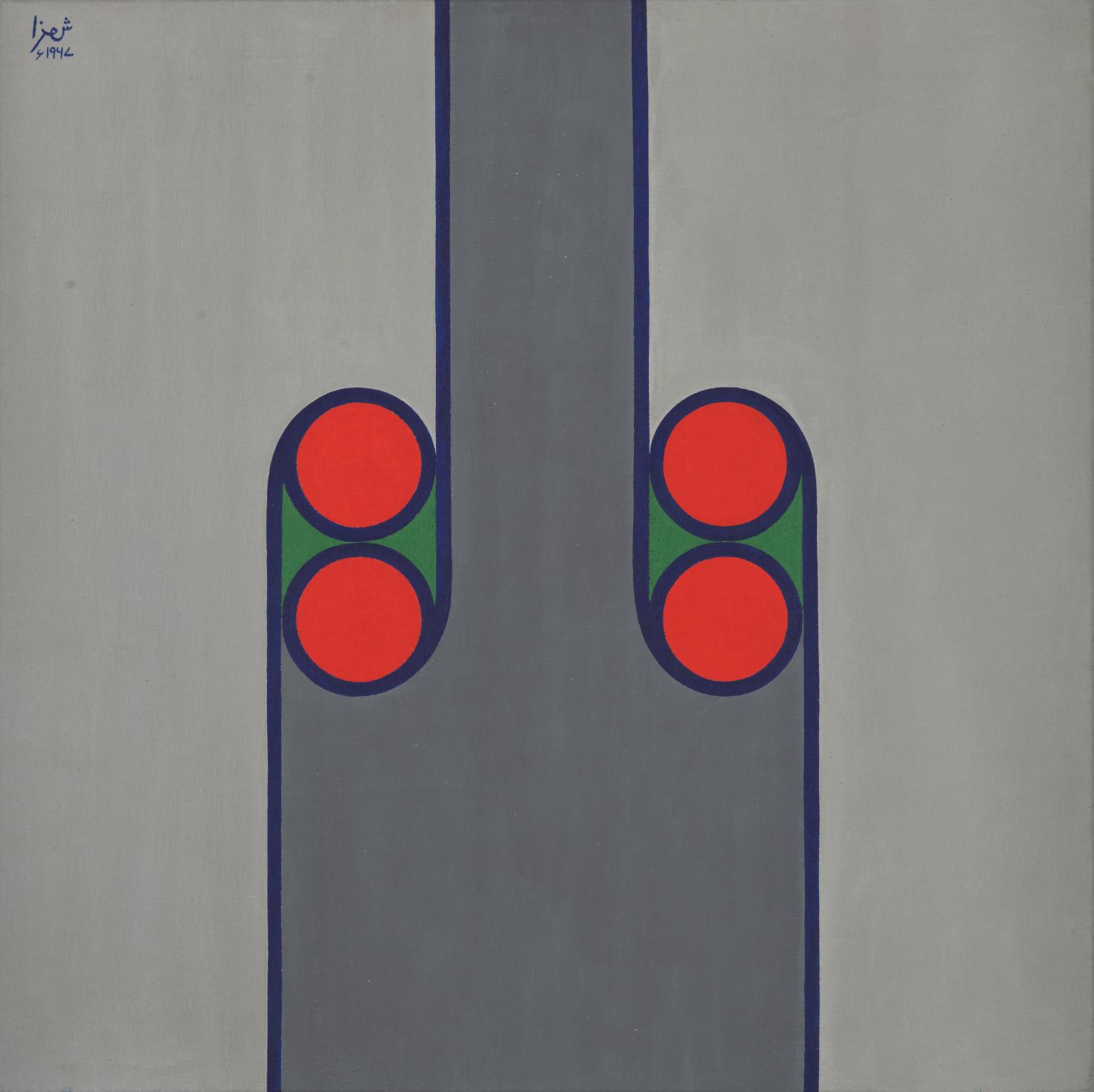
Anwar Jalal Shemza, Meem Two 1967
Shemza started the Meem series in 1967 as part of an ongoing exploration of calligraphic abstraction. In these works Shemza reconfigures the Arabic letter ‘Meem’ into powerful variations displaying great symmetry and rhythm. The ‘Meem’ refers to the initial letter of the prophet Mohammad so has a religious reference, but as the initial of his wife Mary’s first name, it has emotional significance. At the back of one of his notebooks, Shemza expresses: ‘My work is based on the simplification of three dimensional solid, architectural reality of the decorative element of calligraphy… Calligraphy which gives means to convey your feelings and also produce some aesthetic response.’
Gallery label, October 2015
23/28
artworks in The Shape of Words
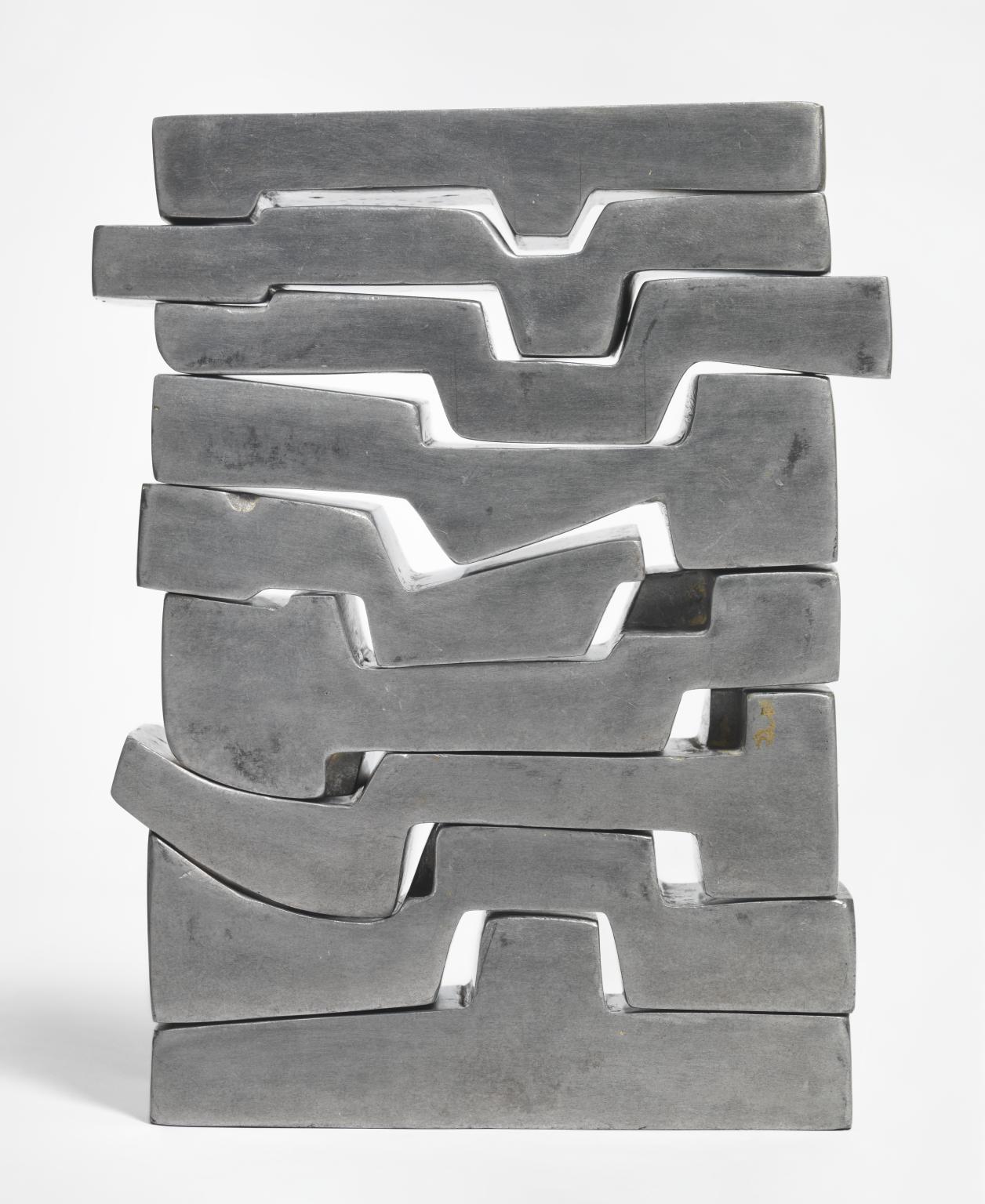
Saloua Raouda Choucair, Poem of Nine Verses 1966–8
Poem of Nine Verses 1966–8 comprises nine different aluminium forms placed on top of one another to create a vertical sculpture. Its configuration recalls many of Choucair’s earlier works including Infinite Structure 1963–5 (Tate T13262). Each of the forms is of a basic rectangular shape, with soft organic curves that interlock in places rather than sitting squarely on top of one another. As the title suggests, each form is likened to a verse in a poem. The work was produced in Beirut in the artist’s studio by carving a wooden version that was then cast in aluminium.
24/28
artworks in The Shape of Words
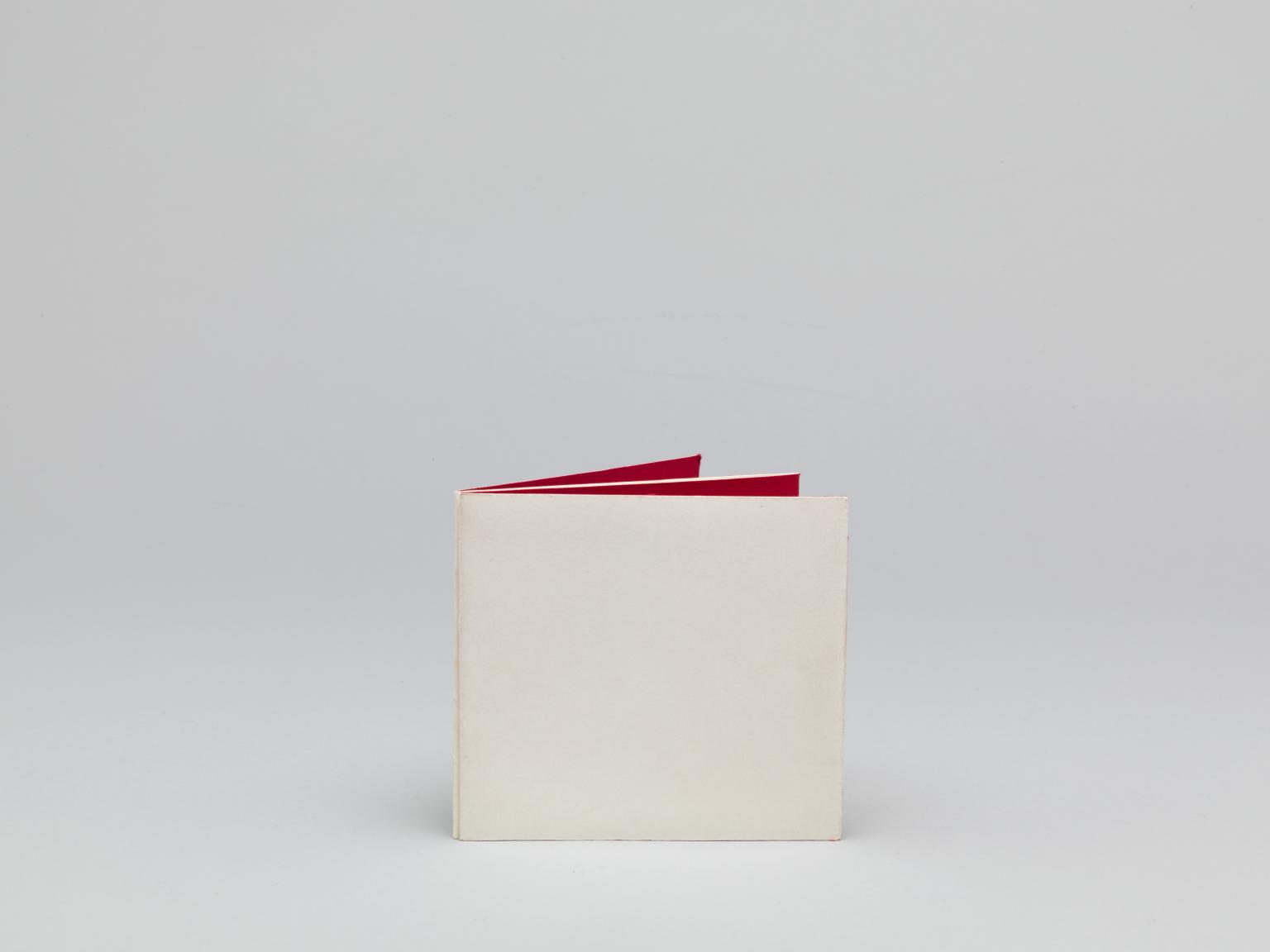
Li Yuan-chia, Calligraphic Book 1963
25/28
artworks in The Shape of Words
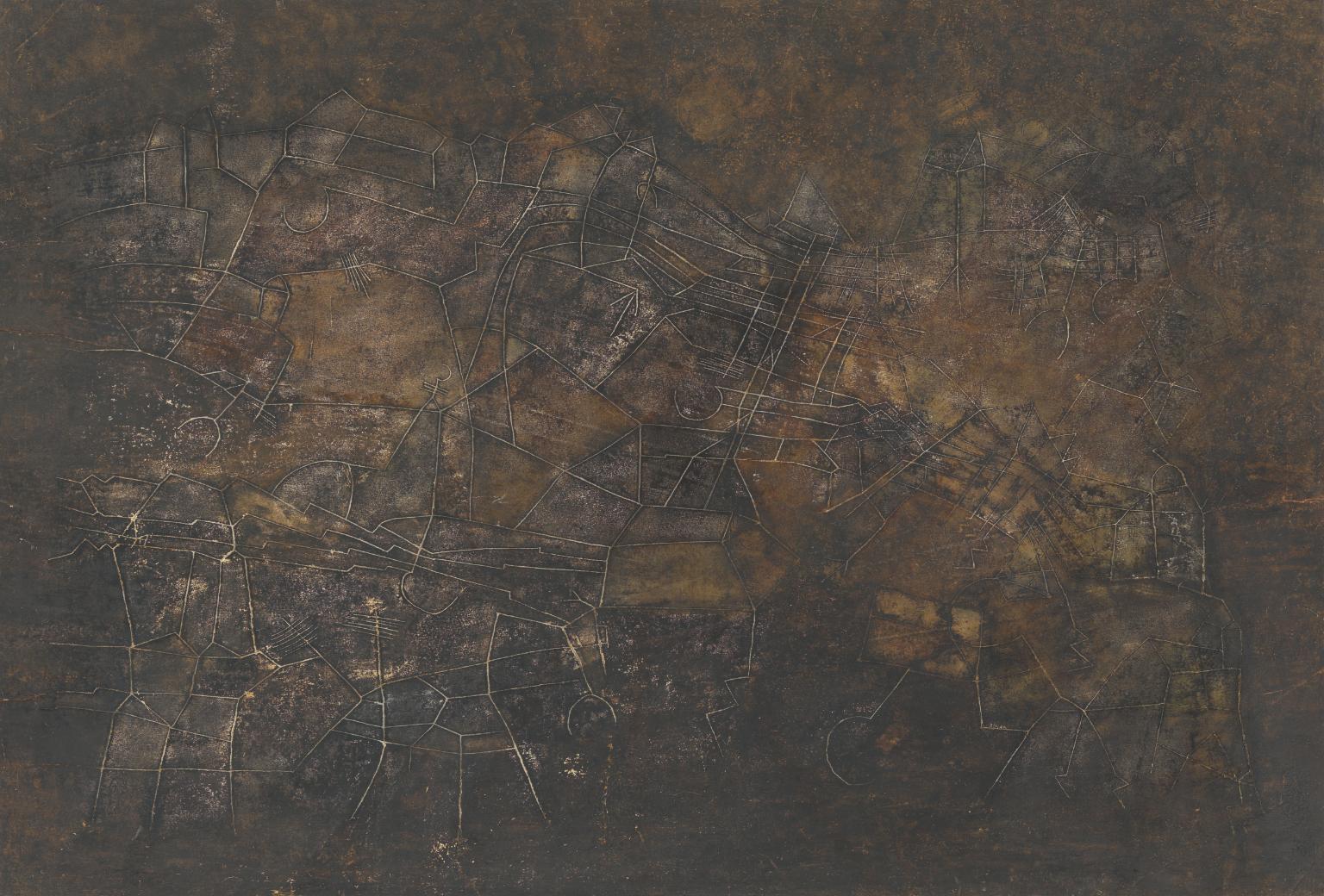
Maliheh Afnan, Nocturnal City 1987
26/28
artworks in The Shape of Words
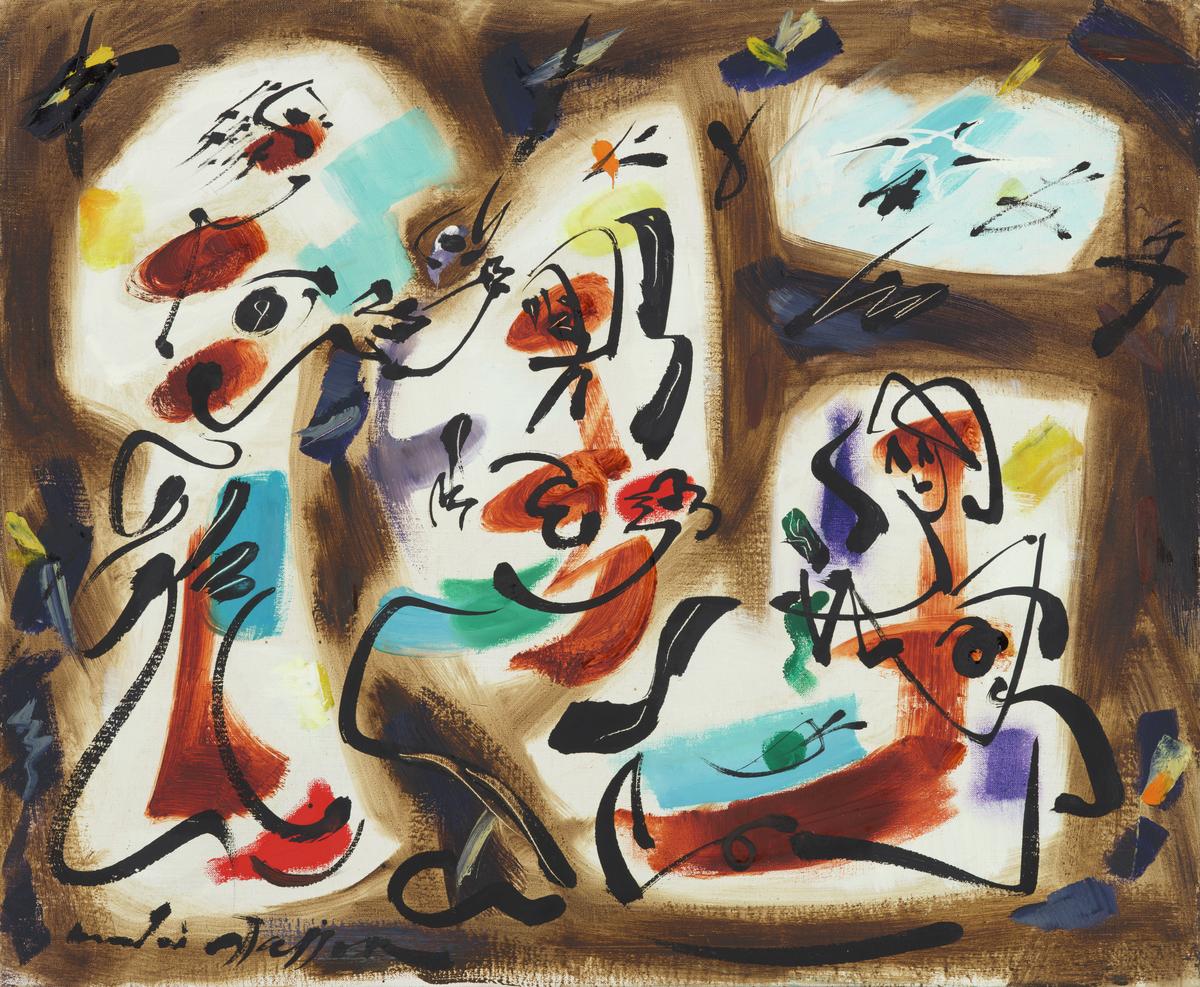
André Masson, Kitchen-maids 1962
27/28
artworks in The Shape of Words

Mimmo Rotella, With a Smile 1962
In the early 1950s, Rotella began to rip posters away from the walls of outdoor hoardings in Rome, and used them to create elaborate collages. Many of these were film posters but he also used advertisements for appliances and other goods, so that his works became a commentary on the post-war consumer boom. In the studio he would mount the poster fragments onto canvas, rearranging the pieces into new compositions but also stripping away further layers to accentuate their distressed appearance.
Gallery label, March 2010
28/28
artworks in The Shape of Words
Art in this room


Sorry, no image available




![P03247: [no title]](jpg/p03247_10.jpg)
Sorry, no image available
Sorry, no image available




Sorry, no image available
Sorry, no image available
Sorry, no image available

Sorry, no image available
Sorry, no image available
Sorry, no image available







You've viewed 6/28 artworks
You've viewed 28/28 artworks